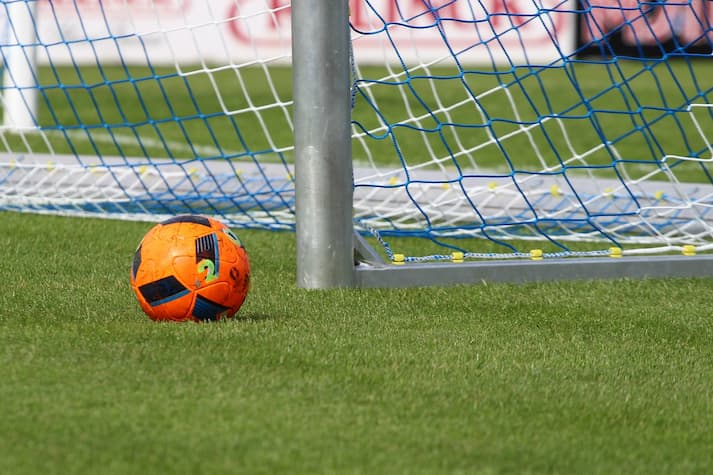7 Tips for Caring for Japanese Grass and How to Plant It
30 December 2023

Japanese grass is commonly used for football fields due to its high durability and ability to grow well in various climate conditions. Proper care for Japanese grass is crucial to maintain its quality, whether on a football field or in Sobat Honda's backyard.
Here are some care tips Sobat Honda can follow, including regular weeding, regular fertilization, proper watering, and cutting the grass to the appropriate height.
To make the grass-cutting process easier, Sobat Honda can use Honda's lawnmower equipped with a reliable 4-stroke mini engine. This lawnmower has features that make grass-cutting easier, saving time and energy for Sobat Honda.
Honda Power offers two types of grass cutter: lawnmowers and brushcutter. If Sobat Honda wants a more efficient trimming process, lawnmower with a bag attachment is recommended. With this setup, the cut grass can directly go into the bag.
Football fields usually have even surfaces, making the lawnmower is highly recommended. Moreover, cutting the grass too short can cause the Japanese grass to turn yellow and become less lush.
Not only is it crucial to cut the grass to the correct height, but there are also many other things Sobat Honda should do to ensure the Japanese grass grows lush. What are they? Let's see the complete explanation below.
Why is Japanese Grass Turning Yellow and Infertile?
Before Sobat Honda learns how to care for Japanese grass, it's essential to understand why it might turn yellow and infertile, Sobat Honda. Understanding these causes will help ensure proper care. Let's take a look at some of the factors below:
Read Also: 10 Types Of Lawn Grass For A Beautiful Garden
1. Hot Weather
While Japanese grass is resilient, if the weather is scorching and the grass is exposed to direct sunlight for extended periods, it may turn yellow and even die. To prevent this, Sobat Honda should regularly water the Japanese grass to promote healthy growth.
2. Excessive Watering
Although Japanese grass requires sufficient watering, too much water can cause the grass roots to rot and turn yellow. It happens because the roots do not receive enough oxygen, leading to the death of the grass.
Sobat Honda should ensure the right amount of water, neither too much nor too little. Watering the Japanese grass thoroughly in the morning or twice a day, depending on the weather and needs, is recommended for Sobat Honda.
3. Poor Soil Quality
Japanese grass requires fertile and nutrient-rich soil to grow well. If the soil around the Japanese grass lacks fertility, it may turn yellow and grow less lush. Sobat Honda needs to ensure the ground is of good quality by providing fertilizers and improving the soil when necessary.
4. Excessive Use of Fertilizers
While fertilizers are essential for Japanese grass's growth, excessive use can cause the grass to receive too many nutrients, leading to yellowing. Sobat Honda should follow the fertilizer usage instructions correctly and avoid using too much fertilizer.
Excess nitrogen in the fertilizer is vital for healthy grass growth. However, too much nitrogen can cause root burn and alter the soil's pH.
5. Animal Urine
Animal urine, such as from dogs, can damage Japanese grass. The substances in urine can burn the grass and cause the area to turn yellow. If Sobat Honda has pets, cleaning the site regularly and preventing them from urinating on the Japanese grass is essential.
6. Spillage of Fuel
Spilling fuel or other chemicals on Japanese grass can have a detrimental impact. It can cause the grass to turn yellow and even die. Suppose the Japanese grass on the football field or Sobat Honda backyard is affected by fuel spills. In that case, cover the area immediately with absorbent materials like sawdust or sand.
Then, thoroughly clean the area with clean water. Also, avoid using harmful chemicals around the Japanese grass to maintain its health and lushness.
7. Compacted Soil
Japanese grass requires space for its roots to grow well. If the soil around the Japanese grass is too compacted, the roots cannot spread properly, resulting in less lush grass. Sobat Honda should ensure the ground has a loose texture to facilitate optimal root growth.
8. Mowing Too Short
Mowing Japanese grass too short can lead to quick damage and increased disease vulnerability. Letting the grass grow to an appropriate height and cutting it to around one-third of its length is better. It will help maintain the strength and beauty of the Japanese grass, mainly when used on football fields.
How to Care for Japanese Grass
Now that Sobat Honda understands the factors that can cause Japanese grass to turn yellow and less lush, let's learn how to care for Japanese grass to keep it healthy and vibrant. Here are some tips Sobat Honda can follow:
Read Also: 5 Benefits Of Cutting Grass That Sobat Honda Must Know
1. Know the Order of Planting Japanese Grass
Before planting Japanese grass, Sobat Honda needs to prepare the planting area. Start by clearing the area of weeds and rocks, Sobat Honda. This step is essential to provide enough space for Japanese grass to grow optimally.
2. Level the Planting Area
After clearing the planting area, the next step is appropriately leveling the ground surface. Use tools like a rake or soil compactor to ensure the soil surface is flat.
Also, ensure the soil is loose enough for Japanese grass roots to penetrate easily. Loose soil will facilitate the growth of strong and healthy roots.
3. Water Twice a Day
In the initial planting phase, providing maximum watering for Japanese grass is essential. The planting area must be watered twice daily, in the morning and the afternoon. When watering, using a hose with a sprinkler nozzle is recommended to allow the water to spread evenly.
Try to direct water upwards, simulating rain, to avoid damaging or lifting the grass blades due to intense water pressure.
4. Use Sandy Soil as Planting Media
Sobat Honda needs an ideal planting medium to support Japanese grass growth. The required soil type is fertile sandy soil. A suitable planting medium typically has a porous texture, allowing easy water absorption.
Ensuring Japanese grass roots can grow freely without waterlogging the soil is essential. Make sure to mix the planting medium well to a depth of 15-20 cm using a hoe.
5. Fertilize Once a Month
Regular fertilization is crucial for maintaining the health and growth of Japanese grass. Use fertilizers that contain essential nutrients like nitrogen, phosphorus, and potassium. Fertilize once a month or according to the instructions on the packaging.
Japanese grass is a nutrient-demanding plant. Soil nutrients deplete rapidly when Sobat Honda plants this grass. To maintain nutrient availability, it is best to re-fertilize the area every month.
6. Regularly Weed the Area
Regular weeding is essential in caring for Japanese grass. Wild plants or weeds can disrupt grass growth and ruin its appearance. Do regular weeding to remove any wild plants that appear around the Japanese grass. Ensure thorough removal of weed roots to prevent their regrowth.
7. Proper Cutting
Make sure to cut the grass using a sharp blade for better results. Perform regular cutting, but avoid cutting the grass too short. Let Japanese grass grow slightly taller to maintain soil moisture and suppress weed growth is better.
Read Also: 10 Landscape Garden Design Ideas And How To Create Them
Sobat Honda can use Honda's LAWNMOWER - HRJ196, which is easy to operate. It also has an engine brake system for the operator's safety. The twin blades applied to this lawnmower provide finer and neater cuts.
Taking care of Japanese grass using this machine is easier and more efficient. So, what are you waiting for? Find the best and most reliable lawnmower according to Sobat Honda's needs at Honda Power Products. Check the specifications and prices now!

Honda Power Products Indonesia
Honda Power Products menyediakan mesin serbaguna, generator, pemotong rumput, pemotong sikat, pompa air, dan mesin tempel.
